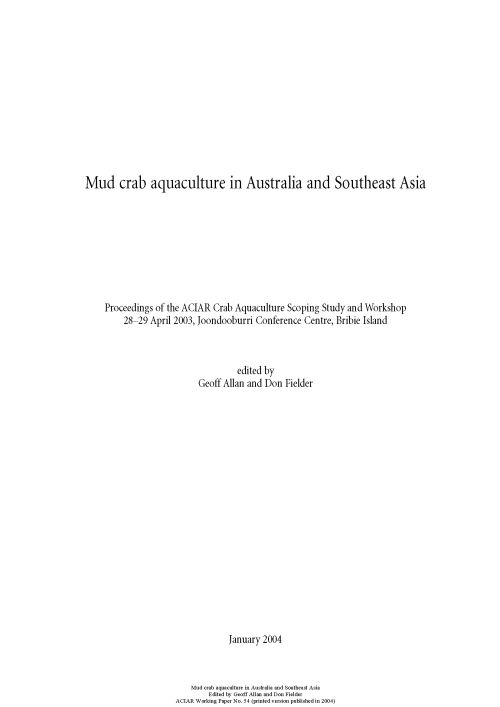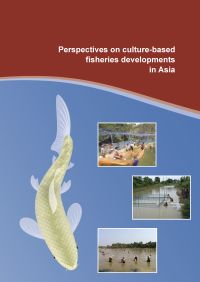Mud crab aquaculture in Australia and Southeast Asia
1 January 2004 | Geoff Allan and Don Fielder (eds.) | 1701 Downloads | .pdf | 376.27 KB | Hatchery and nursery, Nutrition and feeding, Crabs and lobsters, Environment and Sustainability, Australia, Philippines, Vietnam
Mud crab aquaculture has been practised for many years in Southeast Asia, based primarily on capture and fattening of juvenile crabs from the wild. There is an unmet demand for mud crabs and this has led to over-exploitation in many areas. Difficulties with obtaining wild caught juveniles for farming operations, plus concerns of further over-exploitation, have led to major investment in research into hatchery techniques.
ACIAR began investigating mud crab aquaculture in 1992 with most investment being in hatchery technology. Following success of early research and the commencement of a project to assist dissemination of the technology ACIAR encouraged development of a project to develop cost-effective formulated diets to replace trash fish, as feeds and feeding were perceived as the next major bottleneck to mud crab aquaculture after commercial hatchery technology was developed and adopted.
To review mud crab aquaculture in Australia and Southeast Asia, ACIAR funded a scoping study, followed by a workshop to review the study and discuss status and problems in different regions of Australia and Southeast Asia.
The primary conclusion from the scoping study, verified by workshop discussion, was that the substantial crab farming operations which exist throughout Southeast Asia are still mainly based on wild caught crablets. Much of the workshop was devoted to determining the reasons for slow commercial uptake of hatchery technology.
The results of the study and the workshop presented in this report will allow more informed decisions to be made in the way ACIAR commits further funds to crab research.
Copyright, all rights reserved.

